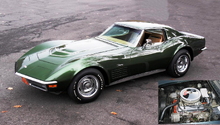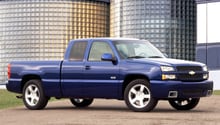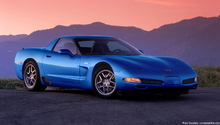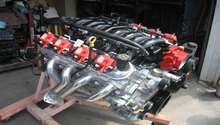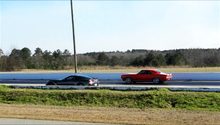Camaro and Firebird: Differences Between LS Engines
Whether you're looking to swap the engine in your Camaro, or just want to learn more about the LS-series of V8 engines, this is the guide for you.
This article applies to the Chevrolet Camaro, Pontiac Firebird and most GM trucks (1998-2002).
Introduced in the 1997 C5 Corvette, the LS1 and LS-series of engines have proven to be some of the most popular performance engines ever created. Internally designated "Generation III," this series is highly modular in nature and spans a large range of applications, displacement, and compositions. When used in car applications, such as the Camaro or Corvette, the LS engines utilize an all-aluminum construction, which reduces the engine's weight. In truck applications, the LS-series engines were usually cast in iron for reduced cost and greater durability. While all LS-based engines are 16-valve (two per cylinder) and overhead valve (OHV) or pushrod-designed engines, displacement varied from 4.8L to 6.0L.
In this article, we will cover the all-aluminum sports car engines, the iron-block truck engines, and of the bunch, the most common ones to swap into your Camaro or Firebird.
Component Breakdown
Car Engines
Starting in 1997 for the Corvette, and 1998 for the Camaro and Firebird, the LS1 was the available V8 engine choice. The LS1 is the daddy of the modern small block Chevy V8, the progenitor of what would go on to be one of the most commonly swapped engines ever. The all-aluminum LS1 displaces 5.7L, and in its introduction, made between 320 to 350hp and 350-365 lb/ft of torque, depending on the iteration. While the Camaro and Firebird forms of the LS1 were stated to be slightly de-tuned versus the top of the line Corvette, independent testing has shown otherwise.

The LS1 has been the basis for many revisions. Sticking with the "Generation III" versions of this engine, the LS6 is next in line. Offering the same 5.7L of displacement, the LS6 engine was the factory hotrod version of the LS1, including modifications such as a more aggressive camshaft, increased compression, higher-flowing manifolds and modifications to the actual block of the engine to increase rigidity, flow and durability. These motors were found in the C5 Corvette Z06 (2001-2004), and first generation Cadillac CTS-V (2004-2005).
Truck Engines
Under the marketing name of "Vortec," the LS-based truck motors have a lot more variety than the car engines; additionally, they are much more plentiful on the used market, as they saw use in almost all of the work trucks sold by GM.
To start us off is the 4.8L, used in the 1500-series of trucks, this is the entry level Vortec V8. Depending on year and configuration, the LR4 made 255 to 285hp and 295 lb/ft of torque.
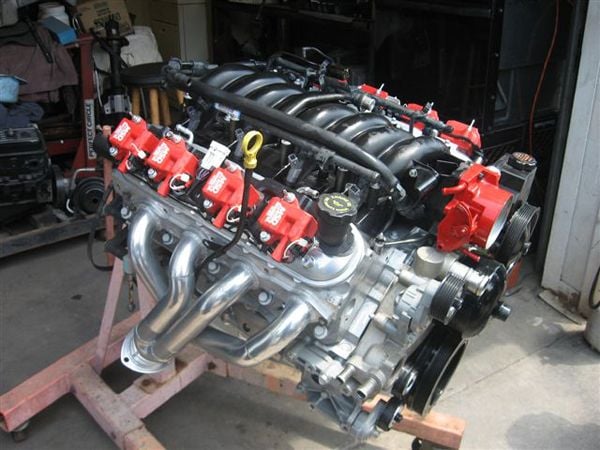
Next up is the 5.3L Vortec series. There are many revisions of the 5.3L Vortec depending on the application. Some of these were iron-block models and others were all aluminum. The Vortec 5300 series of engines include the LM7 (270-295hp and 315-335 lb/ft torque); the L59 that was GM's FlexFuel - E85 compatible model (285-295hp and 320-335 lb/ft torque); the all-aluminum LM4 (290hp and 325 lb/ft torque); superseding the LM4 is the L33, which is considered the most potent of the 5300 motors, making 310hp and 335 lb/ft. The 5300 Vortec was used in just about every GM truck and SUV imaginable between 1999 to 2007.
Finally is the 6.0L series of truck motors, which were used in the 2500-series of trucks and in the more upscale versions of trucks like the Denali and Escalade. With aluminum heads and an iron block, these motors are pretty much bulletproof. The LQ4 is the standard Vortec 6000, making 300 to 325hp and 360 to 370 lb/ft torque. If buyers opted for more "performance-oriented" trucks, they got the LQ9, a.k.a. the Vortec High Output/VortecMAX. These engines had higher compression and slightly hotter exhausts, kicking out an extra 10 hp and 10 lb/ft of torque.
Commonly Swapped LS-Engines
So you're looking to swap an LS engine into your Camaro? Well, what are your goals?
If you're looking for near stock levels of performance for a street car, consider the LS1. It's readily available from either the local junkyard, or if no expenses sparred is your goal, through GMPP (GM Performance Products catalogue). Being all-aluminum, the LS1 is compact and lightweight, meaning that if you care about corner carving at all, it reduces any unnecessary weight gain.
If you're looking for the budget alternative, you can't beat any of the iron-block truck motors. Because these were the workhorses of the Gen-III LS family, they are rugged, reliable and available. Go to your local junkyard, pick up a stone and throw it, I'd be amazed if you don't hit a truck with a 4.8 or 5.3 Vortec in it. If your crafty, you can often find these engines, sold complete, for just a couple hundred bucks. That's pretty tough to beat.
If big power is your game, Vortec is the name. Iron block LS motors can handle heat and abuse like no other. LS1Tech is flooded with people doing Turbo Vortec builds. Thinking practically, the 4.8, although the runt of the litter, has the thickest cylinder linings and it usually the cheapest to buy. That means they will handle higher cylinder pressures from turbo boost, and even if you do manage to pop one, you can pick up another for $400 from your local junkyard. If your Camaro or Firebird was originally equipped with an LS1, you may scoff at losing displacement and going from the 5.7 to a 4.8. Old timers always say, "there's no replacement for displacement," and they are generally right, but the caveat is boost. A turbo 4.8 that is set up right will spank a naturally-aspirated 5.7, dollar for dollar and dragstrip for dragstrip.

Common Questions
How reliable is the LS engine?
In a word, very. LS engines have clearly been designed for several hundred-thousand miles of reliable service. The engines are largely maintenance free beyond the usual fluids and periodic serpentine belt. There are no major known failures regarding the Gen III LS and it is quite common to see cars with 100,000+ miles, stock or modified without issue.
What is weight difference between the iron and aluminum block LS engines?
This will vary a bit depending on the specific engine and its accessories (water pumps, fans, etc.), but it is commonly accepted that the iron block LS engines weigh about 70 to 80 pounds more than their all-aluminum counterparts. If you're going from one to the other, consider the affect that this will have on the front suspension, as that mass is right at the front of the car. Stiffer front spring rates are recommended if you're moving to an iron block LS in the future.
Technical Service Bulletins (TSB)
As previously stated, the LS engine is pretty bulletproof. Perusing the list of TSBs filed by GM to the NHTSA, only a few of them related to the engine, and they are quite mild and could happen to any car, not just the LS. This data can be found on the NHTSA's website.
- TSB 3056: CHECK ENGINE LIGHT WITH A P0300 DUE TO 2-4 CYLINDERS MISFIRING ON THE SAME BANK OF THE ENGINE.
- TSB 020604023A: SOME CUSTOMERS MAY COMMENT ON A MILD TO SEVERE ENGINE PING (SPARK KNOCK) DURING ACCELERATION AND / OR ILLUMINATED MALFUNCTION INDICATOR LAMP WITH DIAGNOSTIC TROUBLE CODE P0332 SET.
- TSB 010601023A: SOME OWNERS MAY COMMENT ON HIGHER THAN EXPECTED OIL CONSUMPTION.
- TSB 000601008: SOME CUSTOMERS MAY COMMENT ON A SQUEAK / CHIRP NOISE COMING FROM THE ACCESSORY DRIVE SERPENTINE BELT ON VEHICLES BUILT PRIOR TO VIN BREAKPOINT Y2107225.
Reviewing the information submitted to the NHTSA, early LS engines had incorrectly gapped spark plugs that could possibly result in knock under hard acceleration. GM revised that stated spark plug gap for LS engines shortly after. Early cars also had the potential for noisy belts, not a failure, but a minor annoyance. Some early build engines were stated to have higher oil consumption. The common rule for most engines is that oil consumption greater than 1L/1000 miles is abnormal. The PCV (positive crankcase ventilation) system received a minor revision to address this.
Related Discussions
- Difference Between 5.3 Truck Motors - LS1Tech.com
- LSX Engine Swap Guide - LS1Tech.com
- 5.3 vs. 5.7 Motors - LS1Tech.com
- LS1 vs. LQ4/9 Engines - LS1Tech.com
- How to Tell Differences Between 4.8 and 5.3 - LS1Tech.com

